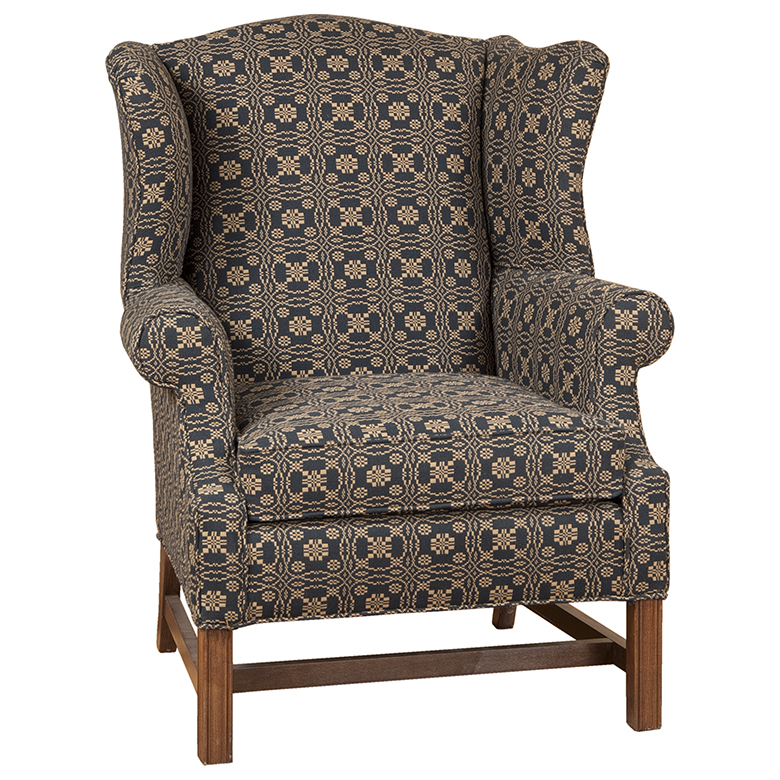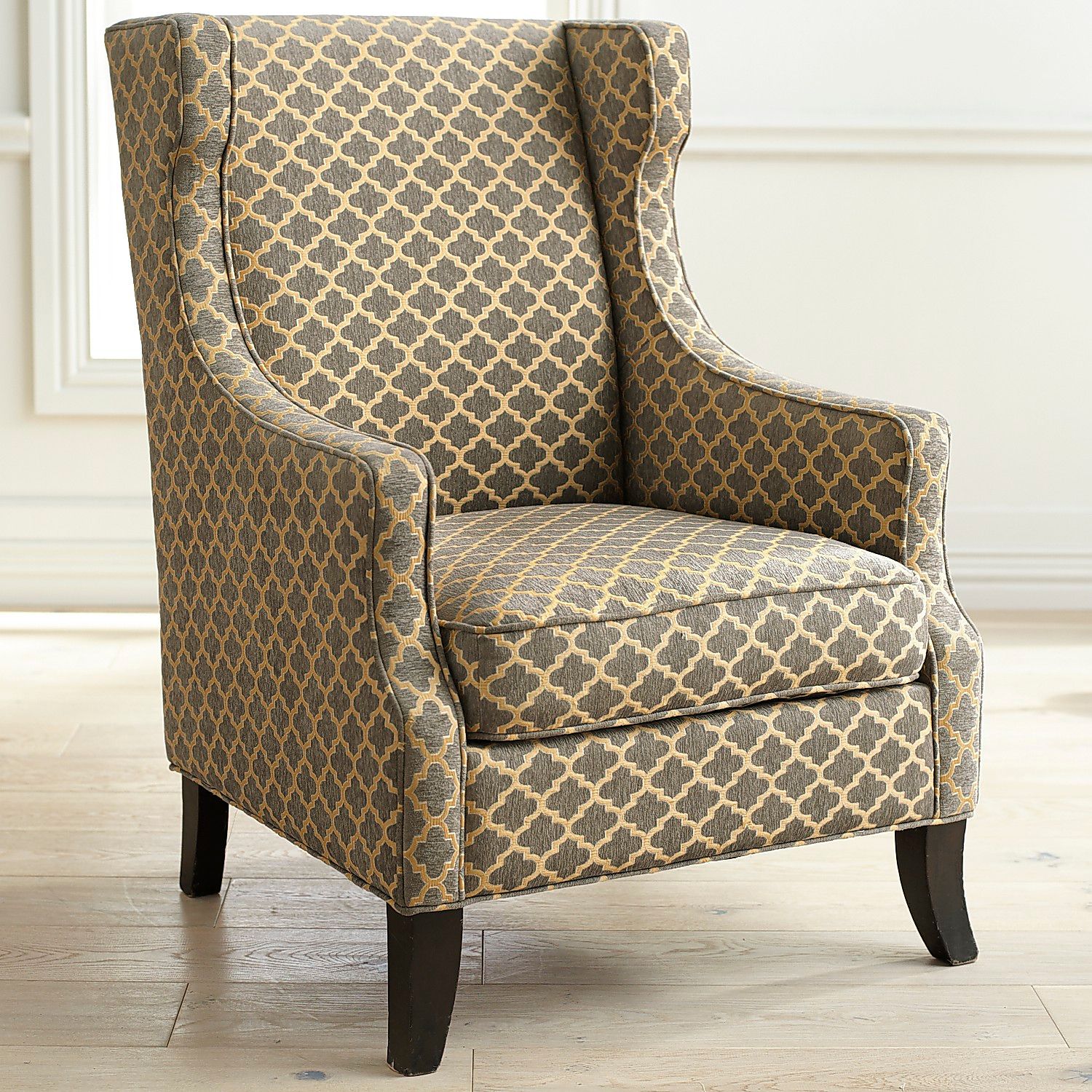History and Evolution of the Classic Wingback Chair

The wingback chair, with its iconic design, has a rich history that spans centuries. Its evolution is a testament to changing tastes, cultural influences, and advancements in craftsmanship. From its humble beginnings to its modern interpretations, the wingback chair has retained its allure and versatility, making it a timeless piece of furniture.
Origins and Early Forms
The wingback chair traces its origins back to the 17th century, emerging in England during the Restoration period. The chair’s earliest forms were likely inspired by the “great chair,” a large, heavy chair used by the aristocracy. The addition of wings, initially designed as practical elements to provide warmth and privacy, transformed the chair into a more intimate and luxurious piece of furniture.
Cultural Influences and Design Evolution
The design of the wingback chair was influenced by various cultural trends and historical events. The 18th century witnessed the rise of the Rococo style, characterized by its ornate and delicate details. Wingback chairs during this period featured curved backs, elaborate carvings, and upholstery in rich fabrics. The Victorian era, with its emphasis on comfort and grandeur, saw the creation of wingback chairs with high backs, deep seats, and plush upholstery.
Styles of Wingback Chairs Throughout History
Wingback chairs have evolved through various styles, each reflecting the prevailing aesthetic preferences of the time.
- Queen Anne Style: This style, popular in the early 18th century, featured elegant curves, cabriole legs, and a high, rounded back. The wings were often shaped like ears and were typically upholstered in damask or velvet.
- Chippendale Style: Thomas Chippendale, a prominent furniture maker of the 18th century, introduced a more robust and masculine style of wingback chair. Chippendale chairs featured straight lines, carved details, and a variety of woods, including mahogany and walnut.
- Hepplewhite Style: George Hepplewhite, another renowned furniture maker, designed wingback chairs with a lighter and more refined aesthetic. Hepplewhite chairs often featured oval backs, slender legs, and delicate upholstery in light fabrics.
- Sheraton Style: Thomas Sheraton, a contemporary of Hepplewhite, designed wingback chairs with a more streamlined and classical look. Sheraton chairs featured straight lines, simple carvings, and upholstery in plain fabrics.
- Victorian Style: The Victorian era witnessed a resurgence of the wingback chair, with a focus on comfort and grandeur. Victorian wingback chairs were often large and imposing, featuring high backs, deep seats, and plush upholstery in velvet or brocade.
- Arts and Crafts Style: The Arts and Crafts movement, which emerged in the late 19th century, emphasized simplicity and functionality. Wingback chairs designed in this style featured straightforward lines, natural materials, and handcrafted details.
- Modern Style: Modern wingback chairs often feature minimalist designs, clean lines, and a focus on comfort. They may be upholstered in a variety of fabrics, including leather, linen, and cotton.
Materials and Construction Techniques
The materials and construction techniques used in creating wingback chairs have evolved over time.
- Early Forms: Early wingback chairs were often constructed from oak or walnut, with the wings and back being made of solid wood. The upholstery was typically made of horsehair or wool.
- 18th Century: During the 18th century, mahogany became a popular material for wingback chairs. The construction techniques also became more sophisticated, with the use of joinery and dovetailing to create durable and elegant pieces. Upholstery became more elaborate, with the use of damask, velvet, and silk.
- 19th Century: The Victorian era saw the use of a wider range of materials, including rosewood, ebony, and satinwood. The construction techniques became even more intricate, with the use of hand-carved details and elaborate upholstery.
- 20th Century: The 20th century witnessed the use of new materials, such as steel and aluminum, in the construction of wingback chairs. The upholstery also became more varied, with the use of leather, linen, and cotton.
Popularity and Usage of the Classic Wingback Chair: Classic Wing Back Chair

The classic wingback chair, with its timeless design and enduring comfort, has remained a staple in homes and public spaces for centuries. Its popularity is rooted in its ability to provide both aesthetic appeal and practical functionality, making it a versatile piece that can seamlessly integrate into various design styles and settings.
Reasons for Enduring Popularity
The wingback chair’s enduring popularity can be attributed to several key factors:
- Comfort: The high back and wings provide excellent head and shoulder support, creating a cozy and enveloping feel. This makes the wingback chair ideal for relaxing, reading, or simply enjoying a moment of peace.
- Versatility: The wingback chair’s classic design allows it to blend seamlessly into various interior design styles, from traditional to contemporary. It can be dressed up or down with different fabrics, colors, and accessories to match the overall aesthetic of a room.
- Durability: Wingback chairs are typically constructed from high-quality materials and built to last. This makes them a worthwhile investment that can be enjoyed for many years to come.
- Timeless Appeal: The wingback chair’s design has remained largely unchanged for centuries, proving its timeless appeal and enduring relevance in the ever-evolving world of interior design.
Common Settings for Wingback Chairs
Wingback chairs are commonly found in a variety of settings, each showcasing their unique qualities:
- Living Rooms: The wingback chair’s comfort and elegance make it a popular choice for living rooms. It can be used as an accent chair, a reading chair, or part of a conversation area.
- Bedrooms: The wingback chair’s cozy and inviting feel makes it a perfect addition to a bedroom. It can be used as a dressing chair, a reading chair, or a place to simply relax and unwind.
- Libraries: The wingback chair’s association with comfort and reading makes it a natural fit for libraries. It can be used for individual reading or as part of a study area.
- Offices: The wingback chair’s elegant design and comfortable seating can add a touch of sophistication to an office. It can be used as a desk chair, a guest chair, or a place to relax and take a break.
Versatility in Interior Design Themes, Classic wing back chair
Wingback chairs are incredibly versatile and can adapt to various interior design themes and color palettes. They can be dressed up or down to complement the overall aesthetic of a room.
- Traditional: Wingback chairs are often used in traditional interiors, where they add a touch of elegance and sophistication. They are often upholstered in rich fabrics like velvet or leather, and may feature intricate details like nailhead trim.
- Contemporary: Wingback chairs can also be used in contemporary interiors, where they add a touch of classic charm. They are often upholstered in simple fabrics like linen or cotton, and may feature clean lines and minimalist details.
- Mid-Century Modern: Wingback chairs can also be used in mid-century modern interiors, where they add a touch of retro style. They are often upholstered in bold fabrics like wool or mohair, and may feature unique shapes and silhouettes.
- Bohemian: Wingback chairs can also be used in bohemian interiors, where they add a touch of eclecticism. They are often upholstered in vibrant fabrics like paisley or floral prints, and may feature unique details like fringe or tassels.
Notable Wingback Chair Designs
Throughout history, several notable wingback chair designs have emerged, each leaving its mark on interior design trends:
- The Chesterfield: The Chesterfield wingback chair, known for its deep button tufting and rolled arms, is a classic example of a traditional wingback chair. It was originally designed for the 4th Earl of Chesterfield, and has since become a popular choice for both residential and commercial settings.
- The Windsor: The Windsor wingback chair, known for its simple design and sturdy construction, is a classic example of a country-style wingback chair. It was originally designed in the 18th century in England, and has since become a popular choice for both indoor and outdoor settings.
- The Eames Lounge Chair: The Eames Lounge Chair, designed by Charles and Ray Eames in the 1950s, is a modern take on the classic wingback chair. It features a sleek and minimalist design, and is known for its exceptional comfort and durability.
Classic wing back chair – The classic wingback chair, with its high, protective back and invitingly curved arms, has long been a symbol of comfort and sophistication. A particularly elegant and timeless version of this design is the chesterfield wing back leather chair , known for its deep button tufting and luxurious leather upholstery.
From grand libraries to cozy living rooms, the classic wingback chair continues to offer a haven of relaxation and timeless style.
The classic wingback chair, with its enveloping wings and plush upholstery, evokes a sense of timeless comfort. While its traditional design may not be ideal for long hours of work, the same principles of support and comfort can be found in modern office chairs.
To ensure a pain-free workspace, consider investing in office chair back support products that provide the same level of lumbar and postural support as a classic wingback, allowing you to work comfortably and productively for extended periods.